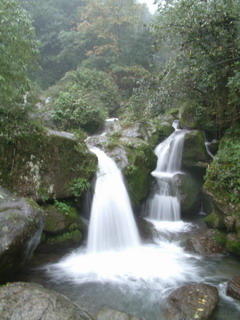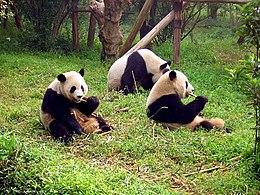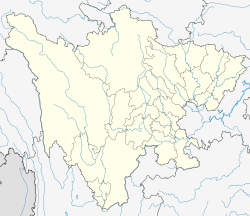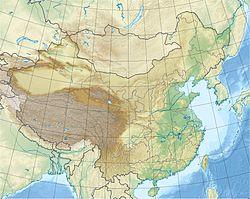| UNESCO World Heritage Site | |
|---|---|
 | |
| Location | Dujiangyan City, Sichuan, People's Republic of China |
| Part of | Mount Qingcheng and the Dujiangyan Irrigation System |
| Criteria | Cultural: (ii)(iv)(vi) |
| Reference | 1001 |
| Inscription | 2000 (24th session) |
| Coordinates | 31°0′6″N 103°36′19″E / 31.00167°N 103.60528°E |
 | |
| Part of | Mount Qingcheng and the Dujiangyan Irrigation System |
| Criteria | Cultural: |
| Reference | 1001 |
| Inscription | 2000 (24th session) |
Mount Qingcheng (Chinese: 青城山; pinyin: Qīngchéng Shān) is a mountain in Dujiangyan, Sichuan, China. It is considered one of the birthplaces of Taoism (Daoism) and one of the most important Taoist centres in China. In Taoist mythology, it was the site of the Yellow Emperor's studies with Ning Fengzi. As a centre of the Taoist religion it became host to many temples. The mountain has 36 peaks. It is home to Dujiangyan Giant Panda Center and is a UNESCO World Heritage Site. Mount Qingcheng was affected by the Wenchuan Earthquake in 2008.[1][2]
Gallery
References
- ^ Nan, Shun-xun; Foit-Albert, Beverly (2007). China's Sacred Sites. Himalayan Institute Press. p. 160. ISBN 9780893892623.
- ^ Hargett, James M. Stairway to Heaven: A Journey to the Summit of Mount Emei. SUNY Press. p. 54. ISBN 9780791482186.
External links
 Media related to Mount Qingcheng at Wikimedia Commons
Media related to Mount Qingcheng at Wikimedia Commons- Mount Qingcheng and the Dujiangyan Irrigation System: the official UNESCO site




